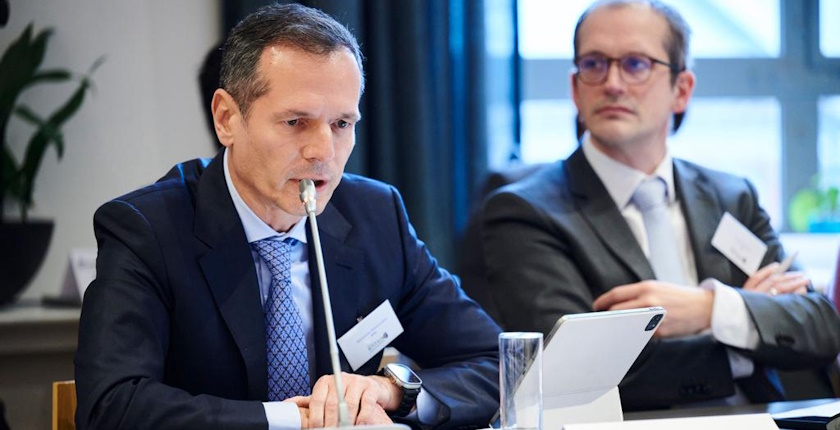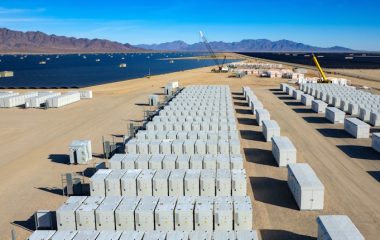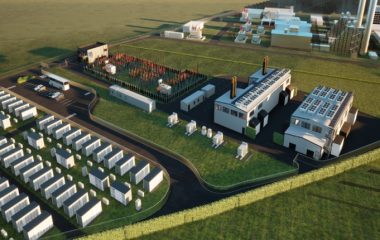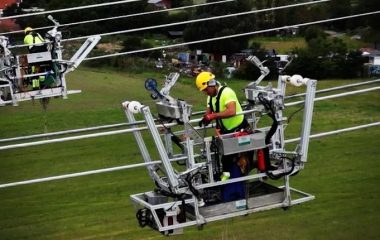
Photo: IPTO
Share
Vertical and horizontal electricity transmission corridors need to take center stage in the public debate in Europe, according to Chairman and Chief Executive Officer of Greece’s Independent Power Transmission Operator Manos Manousakis. He pointed to the need to tap into offshore wind energy and integrate substantial renewable capacity overall.
Vertical and horizontal electricity transmission corridors are a prerequisite for greening the energy mix, enhancing energy independence and improving the reliability of electricity supply, Chairman and CEO of Greece’s Independent Power Transmission Operator Manos Manousakis told his counterparts from across the continent. Speaking at an event held by the European Network of Transmission System Operators (ENTSO-E), he urged for the discussion to start now to be able to drive net emissions to zero by 2050.
“We need a pan-European network of high-voltage direct current (HVDC) electrical interconnections to seamlessly integrate substantial volumes of renewable energy into our power systems. This is essential for harnessing the abundant wind potential in Europe’s sea basins,” said the head of IPTO. The company is also known by its Greek acronym Admie.
At the meeting in Brussels, ENTSO-E unveiled the Offshore Network Development Plan (ONDP), which includes a section called South and East Offshore Grids. It covers most of Italy’s waters, Greece, Croatia, Cyprus, Bulgaria, Slovenia and Romania.
The organization said offshore wind capacity needs to reach 8.7 GW, then more than double to 19.2 GW by 2040 and climb to 28.3 by mid-century. There are still no such wind power plants in the region, except for one offshore Taranto.
“The time has come for vertical and horizontal electricity transmission corridors to take center stage in the public debate,” Manousakis said. He pointed out that high-voltage direct current (HVDC) technology is essential due to its significant technical advantages, ensuring consistent power, voltage, and frequency, while enhancing grid stability and efficiency of the grid.
“In order to fully exploit the huge wind potential of Greece, the South of France, the North Sea, we need this infrastructure. And we need Transmission System Operators to communicate to governments the necessity of cooperation at European level to implement this infrastructure. It is time to plan the projects of the electricity corridors and the necessary interconnections between offshore wind farms in the framework of a holistic approach, considering their viability and cost-benefit ratio from a European perspective as projects of common European interest, rather than bilateral projects between two states. We need to create solutions that support this policy” Manousakis stated.
He highlighted the example of the Green Aegean Interconnector project to transfer the surplus wind potential of the Aegean Sea to the industrial centres of Central Europe.
Cyprus is targeting only 0.1 GW for 2030-2050. Croatia is planning to add 0.5 GW before the end of the current decade and grow to 1.2 GW by 2040 and 3 GW by mid-century. The 2030 goal for Greece is 2.7 GW, ONDP shows. The country intends to lift the capacity to 10 GW over the next decade and to 17.3 GW by 2050.
Greece’s technical potential is much greater, according to Manousakis. “That is why we need an integrated strategy that provides clear guidelines and appropriate tools for the planning and implementation of Europe’s electricity corridors,” in his words.
Italy reached 4.5 GW in its ambitions for 2030, without changes later, just like Romania, but with 1 GW. Bulgaria and Slovenia are yet to produce plans. Taken together, the national plans in ONDP sum up to a total of 8.8 GW in 2030, 16.8 GW ten years later and 25.9 GW in 2050. ENTSO-E’s projection is more ambitious for Italy, adding 2.5 GW for 2040.









Be the first one to comment on this article.